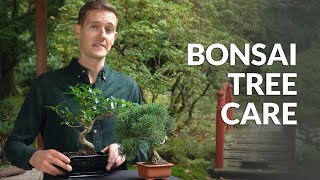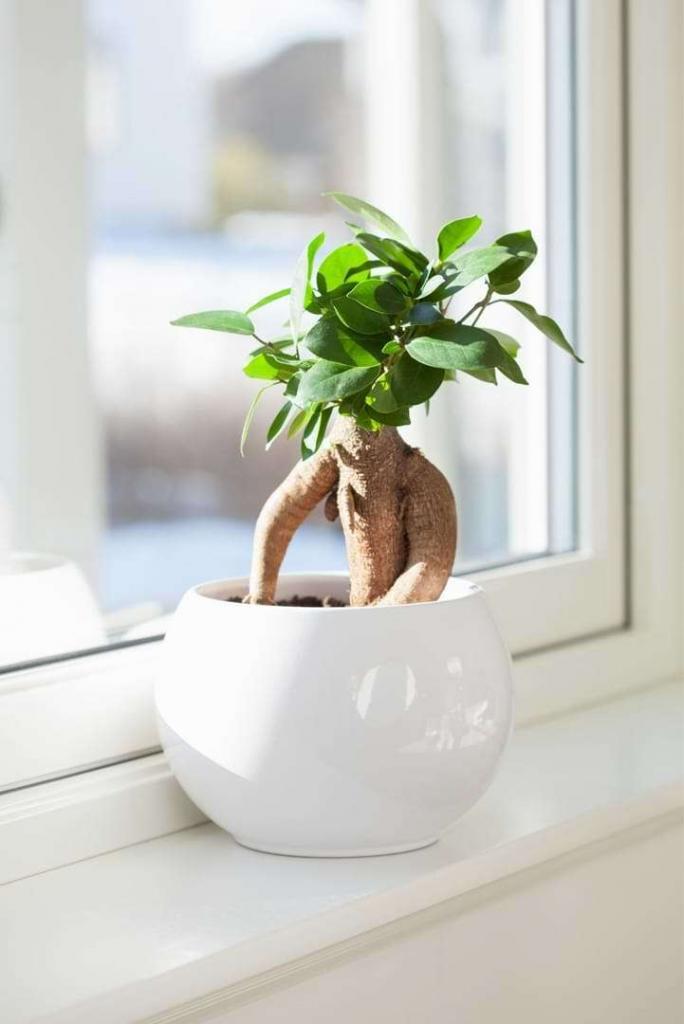Water your bonsai tree regularly and provide sufficient sunlight. Prune it to maintain its shape and health.
Bonsai trees are miniature masterpieces that add beauty to any home. They require proper care to thrive. Regular watering ensures the soil remains moist, but not waterlogged. Adequate sunlight is crucial for photosynthesis and growth. Pruning helps maintain the tree’s shape and encourages new growth.
Use quality bonsai soil to support root health. Fertilize monthly during the growing season for optimal nutrition. Keep the tree in a stable environment, avoiding extreme temperatures. Regularly inspect for pests and diseases. With consistent care, your bonsai tree can flourish and remain a stunning centerpiece in your home.

Credit: www.bonsaiempire.com
Choosing The Right Bonsai
Choosing the right bonsai tree is crucial for beginners. It ensures you start with a tree that fits your environment and skill level. This guide helps you select the perfect bonsai for your home.
Types Of Bonsai Trees
Bonsai trees come in various types, each with unique care needs. Here are some popular types:
- Ficus Bonsai: Ideal for indoor spaces and easy to maintain.
- Juniper Bonsai: Perfect for beginners and thrives outdoors.
- Chinese Elm: Suitable for both indoor and outdoor settings.
- Japanese Maple: Known for its stunning fall colors.
- Jade Bonsai: A succulent that requires minimal water.
Best Bonsai For Beginners
Starting with the right bonsai tree is essential for success. Here are the best options for beginners:
- Ficus Bonsai: This tree is forgiving and hardy.
- Jade Bonsai: Needs less water and is easy to shape.
- Juniper Bonsai: Thrives outdoors and is resilient.
Choosing the right bonsai ensures a rewarding experience. Start with these beginner-friendly options and enjoy the art of bonsai at home.
Setting Up Your Bonsai
Setting up your bonsai tree is the first step to ensure its healthy growth. Proper setup helps your bonsai thrive and enhances its beauty. Let’s explore the essentials of setting up your bonsai tree at home.
Ideal Location
Choosing the ideal location for your bonsai is crucial. Bonsai trees need plenty of light and a stable environment.
- Light: Place your bonsai near a window where it gets 6 hours of sunlight.
- Temperature: Maintain a temperature between 65-75°F.
- Humidity: Ensure the room has a humidity level of 50-60%.
- Air Flow: Good air circulation prevents mold and pests.
Choosing The Right Pot
The pot you choose affects your bonsai’s health. It should provide enough space for roots and drainage.
| Pot Feature | Importance |
|---|---|
| Size | Should be proportional to the bonsai tree size. |
| Drainage | Ensure the pot has drainage holes to prevent waterlogging. |
| Material | Clay or ceramic pots are ideal for maintaining moisture. |
Follow these guidelines for setting up your bonsai. It will thrive and bring beauty to your home.
Watering Techniques
Watering a bonsai tree correctly is essential for its health. Understanding the right techniques will help keep your bonsai thriving. In this section, we will explore the best methods for watering your bonsai tree at home.
When To Water
Knowing when to water your bonsai is crucial. Check the soil daily. Use your finger to test the soil’s moisture level. Insert your finger about an inch deep. If the soil feels dry, it’s time to water. Don’t water if the soil is still moist. Overwatering can harm your bonsai.
How Much To Water
It’s important to know how much water your bonsai needs. Water until water drains from the bottom of the pot. This ensures the roots get enough moisture. Make sure the soil is evenly wet. Avoid leaving the bonsai in standing water. This can cause root rot.
Consider using a watering can with a fine nozzle. This helps distribute water evenly. A misting bottle can also help keep leaves hydrated. But remember, misting is not a substitute for proper watering.
| Step | Description |
|---|---|
| 1 | Check soil moisture daily. |
| 2 | Water when the soil is dry. |
| 3 | Water until it drains from the pot. |
| 4 | Ensure even soil moisture. |
- Use a watering can with a fine nozzle.
- Avoid overwatering to prevent root rot.
- Mist the leaves to keep them hydrated.
Pruning And Shaping
Pruning and shaping are essential for maintaining a healthy and attractive bonsai tree. These techniques help control growth, encourage new branches, and create the desired aesthetic. Understanding basic pruning tips and advanced shaping techniques will guide you in taking care of your bonsai tree at home.
Basic Pruning Tips
Pruning is the process of cutting back branches and leaves. This maintains the tree’s shape and size. Here are some basic tips:
- Use sharp, clean tools: Dirty tools can harm your bonsai tree.
- Prune in the growing season: This is usually spring and summer.
- Cut above leaf nodes: This encourages new growth.
- Remove dead branches: This keeps your tree healthy.
- Thin out dense areas: This allows light and air to reach inner branches.
Advanced Shaping Techniques
Advanced shaping techniques involve more than just cutting branches. They help create intricate designs. Here are some methods:
- Wiring: Wrap wire around branches to bend them. This shapes the tree over time.
- Clamping: Use clamps to change branch direction. This is a slower process but effective.
- Jin and Shari: Remove bark to create a weathered look. This gives the tree an ancient appearance.
Below is a table summarizing these techniques:
| Technique | Description |
|---|---|
| Wiring | Wrap wire around branches to bend them. |
| Clamping | Use clamps to change branch direction slowly. |
| Jin and Shari | Remove bark to create a weathered look. |
By following these pruning and shaping methods, you can keep your bonsai tree healthy and beautiful. Regular care ensures the tree grows strong and looks stunning.
Soil And Fertilization
Caring for a bonsai tree involves understanding its specific needs. Two crucial aspects are soil and fertilization. The right soil mix ensures your bonsai thrives. Proper fertilization promotes healthy growth and vibrant leaves.
Best Soil Mix
A well-draining soil mix is essential for bonsai trees. It allows water to flow freely and prevents root rot. A good mix includes:
- Akadama
- Pumice
- Lava rock
These components offer the perfect balance of nutrients and drainage.
| Component | Percentage |
|---|---|
| Akadama | 50% |
| Pumice | 25% |
| Lava rock | 25% |
Fertilizing Schedule
Bonsai trees need regular fertilization to stay healthy. Follow this simple schedule:
- Spring: Use a high-nitrogen fertilizer weekly.
- Summer: Switch to a balanced fertilizer every two weeks.
- Fall: Use a low-nitrogen fertilizer weekly.
- Winter: Fertilize sparingly, once a month.
Always use a liquid fertilizer for best results. Dilute it according to the instructions on the label.
Monitor your bonsai’s growth and adjust the fertilization if needed. Healthy trees have bright leaves and strong branches.
Pest And Disease Control
Taking care of a bonsai tree at home requires attention to pest and disease control. Ensuring your bonsai stays healthy is crucial. This section will guide you on how to manage common pests and prevent diseases effectively.
Common Pests
Bonsai trees can attract various pests. Aphids, spider mites, and scale insects are common culprits. These pests can weaken your bonsai and stunt its growth.
| Pest | Symptoms | Treatment |
|---|---|---|
| Aphids | Sticky leaves, distorted growth | Spray with soapy water |
| Spider Mites | Yellowing leaves, webbing | Use neem oil spray |
| Scale Insects | Brown bumps, sticky residue | Remove manually, apply horticultural oil |
Preventing Diseases
Disease prevention is key to a healthy bonsai tree. Follow these steps to keep your bonsai disease-free:
- Ensure proper drainage to avoid root rot.
- Water your bonsai correctly to prevent fungal infections.
- Prune regularly to maintain good air circulation.
- Inspect your tree weekly for early signs of disease.
Common diseases like powdery mildew and leaf spot can affect bonsai trees. Treat these diseases promptly to avoid severe damage.
By staying vigilant and proactive, you can ensure your bonsai remains healthy and vibrant. Proper pest and disease control will help your bonsai tree thrive at home.
Seasonal Care
Caring for a bonsai tree requires attention to detail throughout the year. Each season brings unique challenges and needs. Proper seasonal care ensures your bonsai stays healthy and beautiful all year round.
Winter Care
During winter, bonsai trees need special attention. The cold weather can be harsh, especially for sensitive species.
- Temperature: Keep your bonsai in a cool room. Avoid placing it near heaters.
- Watering: Water less frequently. Ensure the soil is moist but not soggy.
- Light: Place your bonsai near a window with indirect sunlight.
- Humidity: Use a humidity tray to maintain adequate moisture levels.
Summer Care
In the summer, bonsai trees thrive in warm temperatures. Proper care during this season promotes growth and vitality.
- Temperature: Place your bonsai outside. Ensure it gets partial shade.
- Watering: Water regularly. Ensure the soil remains consistently moist.
- Light: Provide ample sunlight. Morning sun is best.
- Fertilizing: Feed your bonsai with a balanced fertilizer every two weeks.

Credit: bonsairesourcecenter.com
Repotting Your Bonsai
Repotting is essential for keeping your bonsai tree healthy. It ensures the roots have space to grow. Repotting also refreshes the soil and provides nutrients. Follow these steps to keep your bonsai thriving.
When To Repot
Bonsai trees need repotting every 2 to 3 years. The best time is in early spring. This is when the tree is still dormant. Check the roots to see if they are circling the pot. If so, it’s time to repot.
Steps To Repot
- Prepare your tools: You will need pruning shears, fresh soil, and a new pot.
- Remove the tree: Gently lift the bonsai from its pot. Be careful not to damage the roots.
- Trim the roots: Cut off about one-third of the roots. Use sharp pruning shears.
- Clean the pot: If reusing the old pot, clean it thoroughly.
- Add fresh soil: Place a layer of fresh soil at the bottom of the pot.
- Replant the bonsai: Position the bonsai in the center. Add soil around the roots, pressing firmly.
- Water the tree: Water the bonsai thoroughly after repotting.
| Step | Description |
|---|---|
| Prepare your tools | Gather pruning shears, fresh soil, and a new pot. |
| Remove the tree | Gently lift the bonsai from its pot. |
| Trim the roots | Cut off about one-third of the roots. |
| Clean the pot | Clean the pot thoroughly if reusing it. |
| Add fresh soil | Place a layer of fresh soil at the bottom. |
| Replant the bonsai | Position the tree and add soil around the roots. |
| Water the tree | Water the bonsai thoroughly. |
Repotting your bonsai tree is a rewarding task. It helps your tree stay healthy and beautiful. Follow these steps, and your bonsai will thrive.

Credit: dengarden.com
Conclusion
Caring for a bonsai tree at home is rewarding. Follow these tips for a healthy, thriving tree. Regular watering, proper lighting, and pruning are essential. Remember to check for pests and diseases. With patience and attention, your bonsai tree will flourish, adding beauty and tranquility to your home.
Happy gardening!

